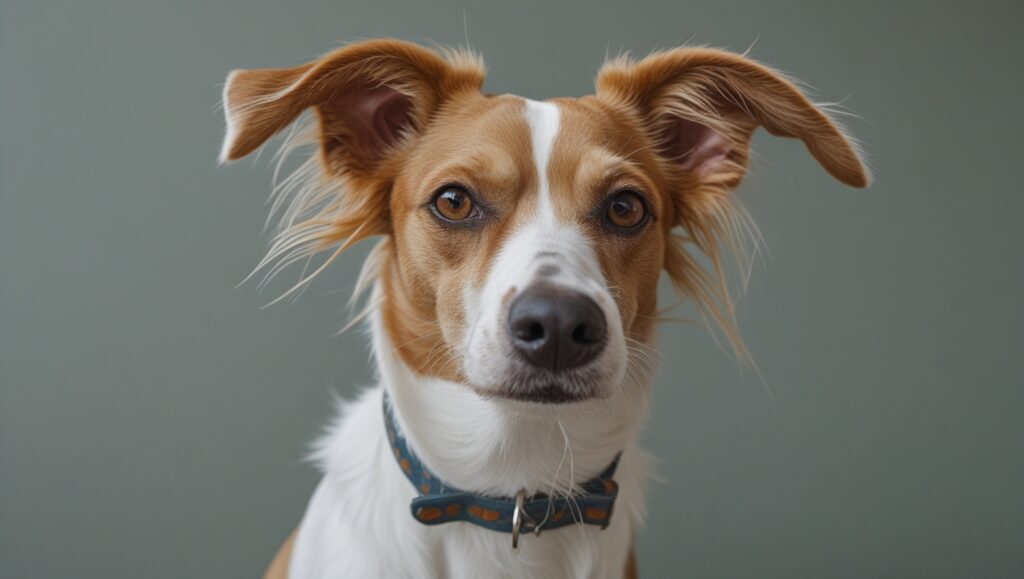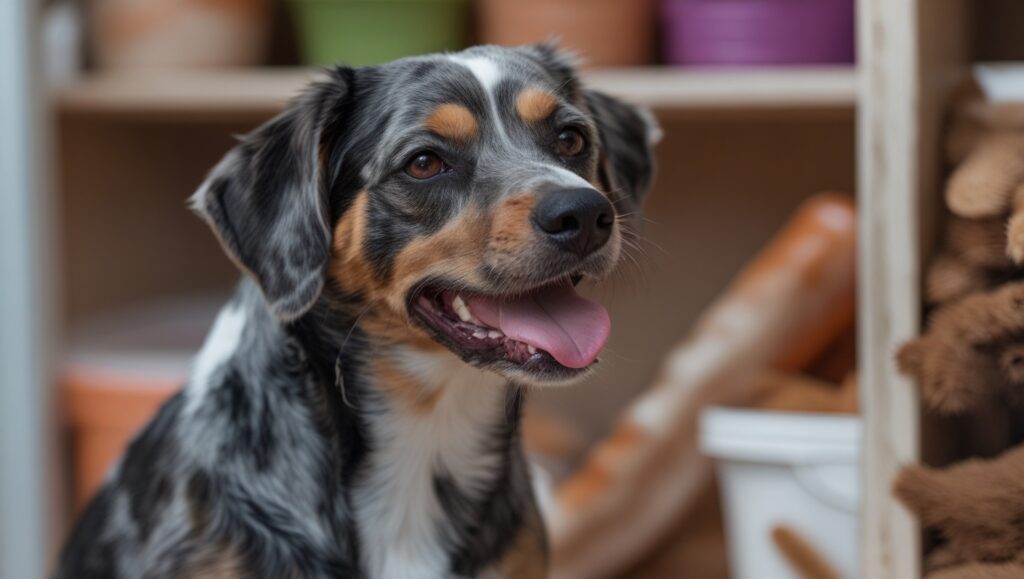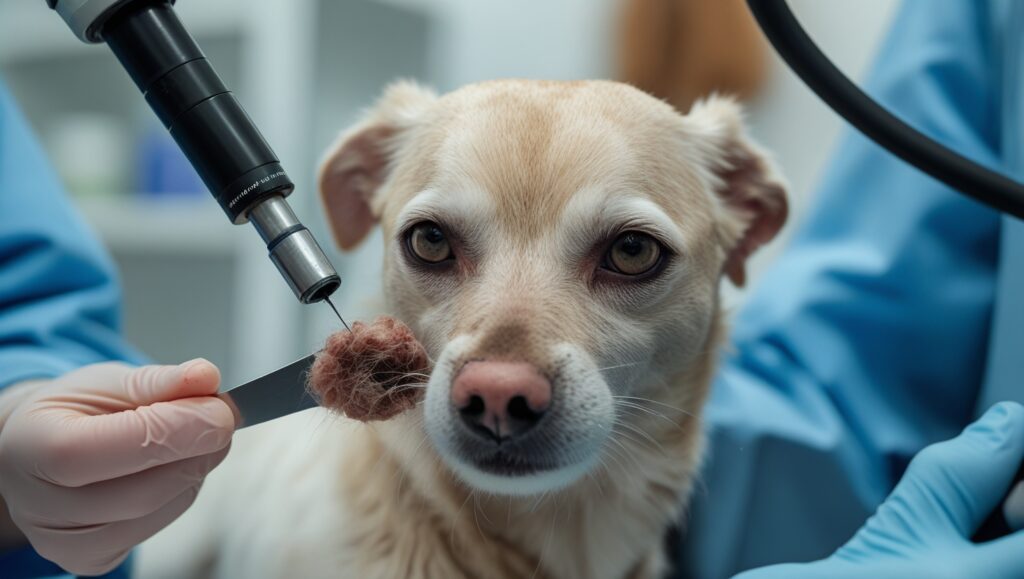A painful and uncomfortable Lip fold pyoderma in dogs is a skin disorder that attacks the crevices of the lips; the condition is more likely to develop in canines with loose and wrinkled surface features. The causative factor of this condition is the presence of moisture, food particles, and bacteria in the folds of the lips, which makes the site become infected and inflamed.
Table of Contents

Without treatment, it may seriously affect the health and comfort of your dog—it may be itchy all the time, smell, and even get sores.
What is Lip fold pyoderma?
It is a skin infection that occurs in the wet and warm folds of the lips of a dog, more so, the lower lips. A skin infection due to bacteria is referred to as pyoderma. The infections are common in places where one rubs with skin and the movement of air is limited.
Specifically, the dogs that have saggy jowls or easily noticeable facial crevices are particularly at risk, including:
- Bulldogs
- Cocker Spaniels
- Saint Bernards
- Shar-Peis
- Basset Hounds
Principal Factors of Lip Fold Pyoderma
Several causes lead to the emergence of this condition:
1. Excess Moisture
The skin folds are likely to be filled with saliva, water, and food. Otherwise, this moisture creates ideal conditions for bacteria to breed.
2. Poor Hygiene
Ungroomed dogs or those with improperly cleaned folds have a greater chance of accumulating bacteria.
3. Facial Structure
It so occurs in deep facial folds of the breeds or long lips because they have space for moisture, and bacteria to get stuck.
4. Intrinsic Skin Diseases
Allergic, dermatitic, or immunodeficient dogs are likely to develop infections such as pyoderma.
Symptoms of Pyoderma in Lip Fold
This condition needs to be detected early. Among the most frequent manifestations are
- Inflammation and erythema on the lip folds.
- Bad smell around the mouth.
- Flowing of discharge or pus.
- One does lick or rub the mouth constantly.
- Crusting, scabs, or open sores.
- Apprehension in eating (pain around mouth functions, such as encoding raw data, brought about by the pain around the mouth).
In case you realize any of these, then it is time to take your dog to checkups.
Diagnosis Diagnosis What to expect at the Vet
Your veterinarian will have to look at the folds and most probably perform a skin cytology test in order to diagnose what kind of bacteria were present. A bacterial culture might be required in chronic or severe cases so that the proper selection of antibiotics is made.

Good Treatment Solutions
1. Cleaning the Wounded Space
Cleaning folds with antiseptic solutions (veterinary-approved wipes or chlorhexidine) is the quickest action that could be taken. The area should be left dry after every cleaning.
2. Topical Medications
Your vet will possibly prescribe a topical antibiotic or antifungal ointment to lessen infection and inflammation.
3. Oral Antibiotics
In moderate and severe cases, it may be needed to treat the infection in deeper tissue with the help of oral antibiotics.
4. Medicated Shampoos
You can handle the condition by washing the face of your dog with antibacterial or antifungal shampoos.
5. Surgical Adjustment (In Case of Chronicity)
An operation, termed ascheiloplasty (lip fold reduction), may be performed in regular or extreme instances to reduce the unwarranted folds and the humidity retention.
Prevention and Care at Home
It is easier to prevent than to treat. The following are some of the ways through which you can make your dog healthy:

- Daily Wipe Downs: Make sure to wipe the crevices gently with a cloth/warm wet cloth, or vet-approved wipes.
- Smart Tricks: Dry the folds and keep the area dry after a cleanup by wiping with a clean and soft towel.
- Regular brushing: Hair along the mouth should always be cut so that no kind of moisture is achieved, particularly in the summer season.
- Barrier Cream: A few pet-safe ointments can result in a water-resistant wrap.
- Look at Early Warning Signs: You should check your dog regularly in the area of the lip folds to diagnose redness or odors.
Breeds at increased risk of developing lip Fold Pyoderma
The only way to remain proactive is to know whether your dog is at a greater risk. Usually affected breeds are:
- English Bulldogs
- French Bulldogs
- Mastiffs
- Spaniels
- Newfoundlands
- Bloodhounds
These breeds may also be prone to regular infection; hence, they may need lifetime hygienic care.
The Reasons to See a Vet
Prevent a state of procrastination so much so that the infection worsens. Look out: Hiccups, excessive saliva, grumpiness, loss of appetite, bloody and runny nose, and blood-stained mucus.

- Fetid breath
- Green or yellow drainage.
- Possible uncovered sores or bleeding.
- Your dog’s refusal to eat.
- Indications of pain when touched around the mouth.
Final Thoughts
Even though this effect of lip fold pyoderma on dogs is minor, there is no shortage of forms of painful infections that the bite can assume. The key measures to prevent chronic discomfort and complications are frequent hygiene, early diagnosis, and successful treatment.
In case your dog belongs to wrinkly types or sloppy-lipped types, include lip fold hygiene in your daily routine, and go to your vet in case you observe some of the symptoms. With the right approach to the issue, you will ensure that your furry friend will feel comfortable and healthy and that there will be no infections.
Is it possible that lip fold pyoderma can clear up on its own?
No, it does not get cured automatically. The infection normally worsens without treatment. The affected area must be cleaned properly, treated with topical or oral medications, and protected with the help of proper care.
What is the frequency of cleaning the lip folds of my dog?
Folds of breeds that are prone to lip fold infections should be cleaned at least once daily. In case the dog is drooling too much or is eating something messy, then you may need to dry the place regularly to avoid any type of bacterial growth.
Does pyoderma of the lips infect another animal or person?
It is not contagious. No. It is an infection triggered by bacteria that are normally found on the skin of a dog but become troublesome when the skin is wet and trapped. Nonetheless, proper hygiene cannot be overlooked to keep away other skin problems.



